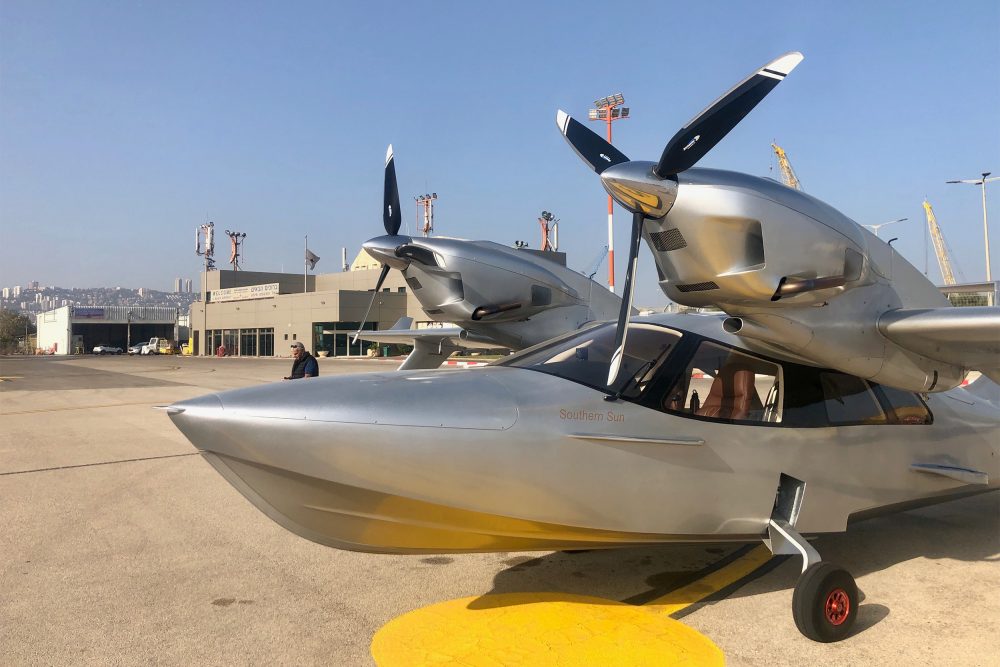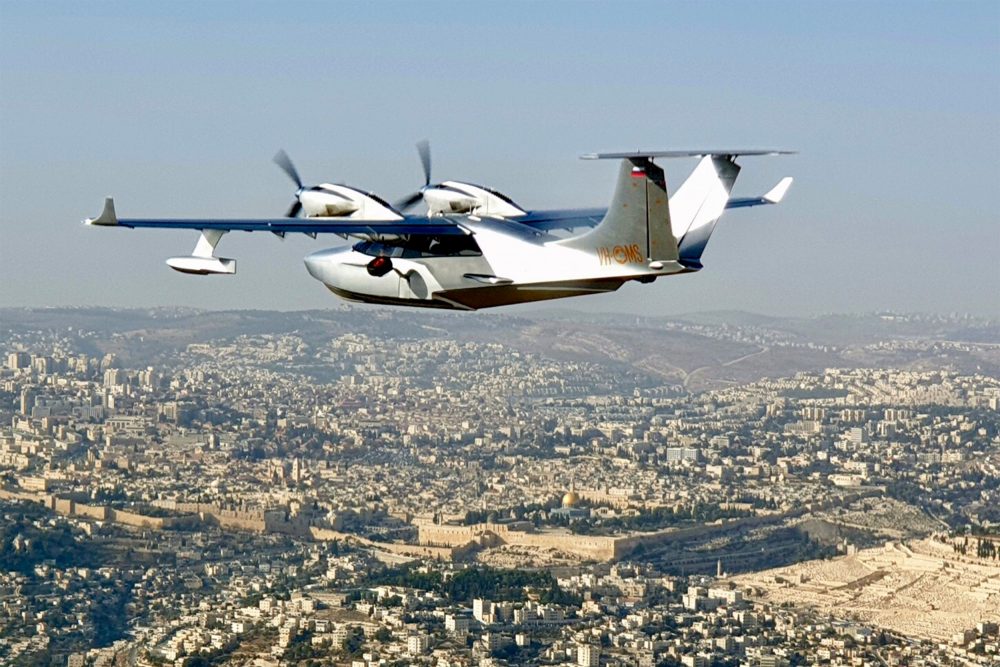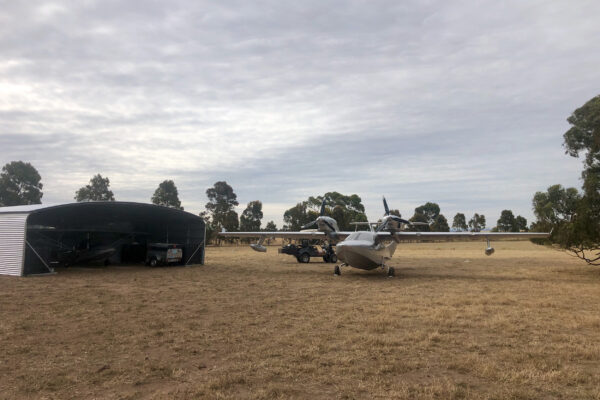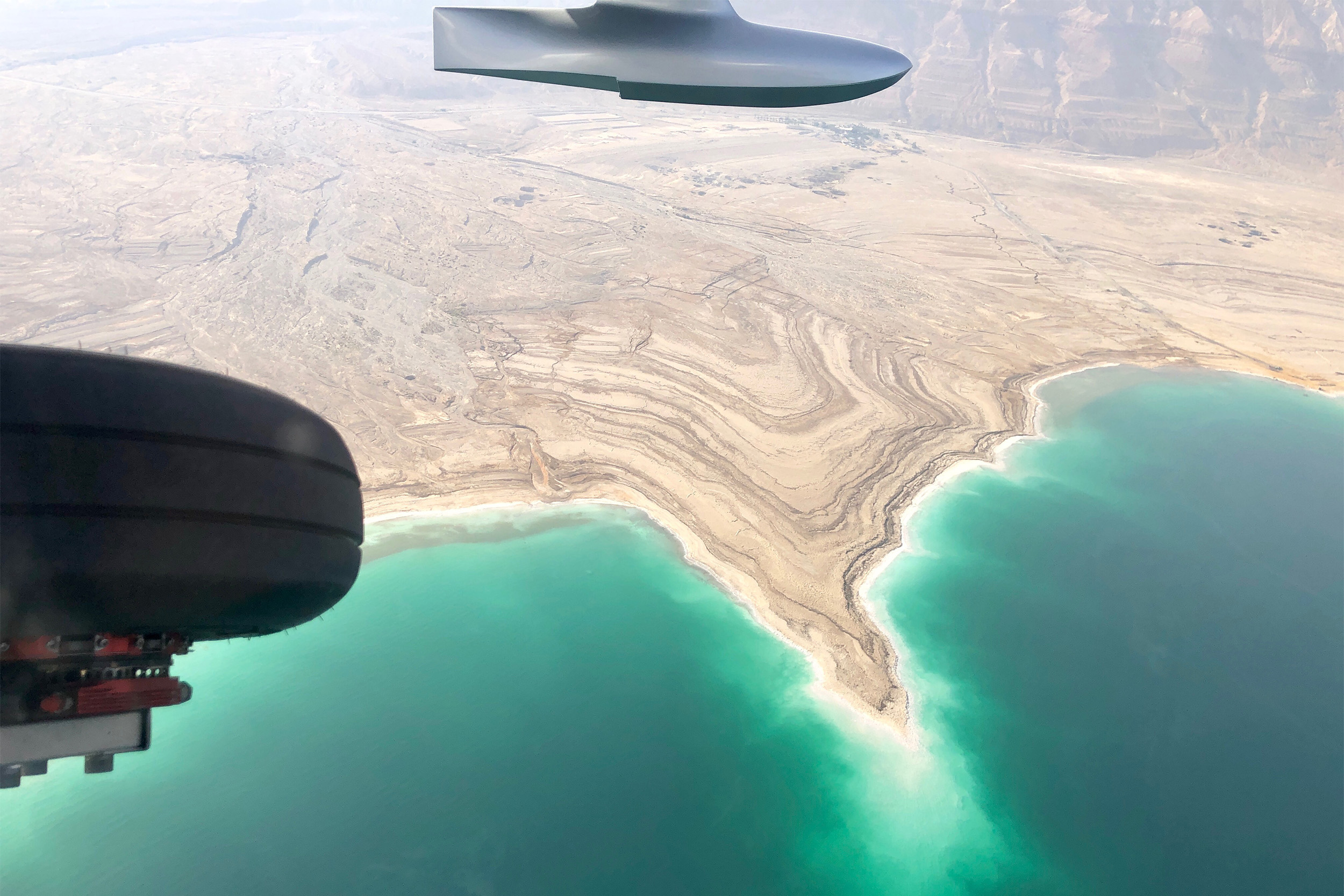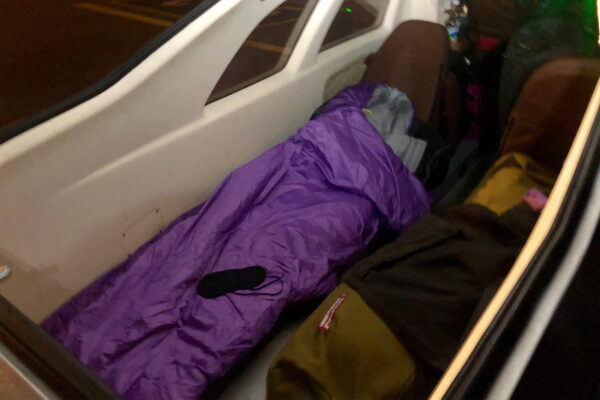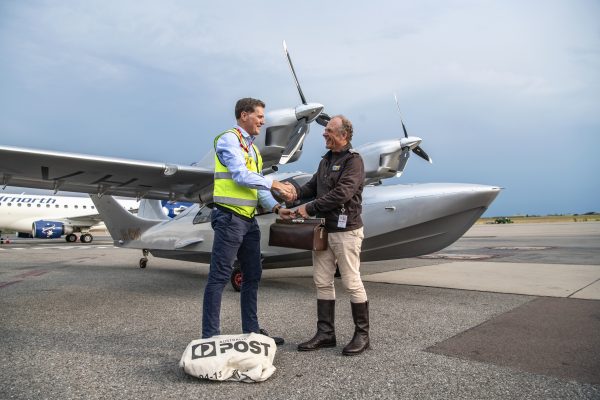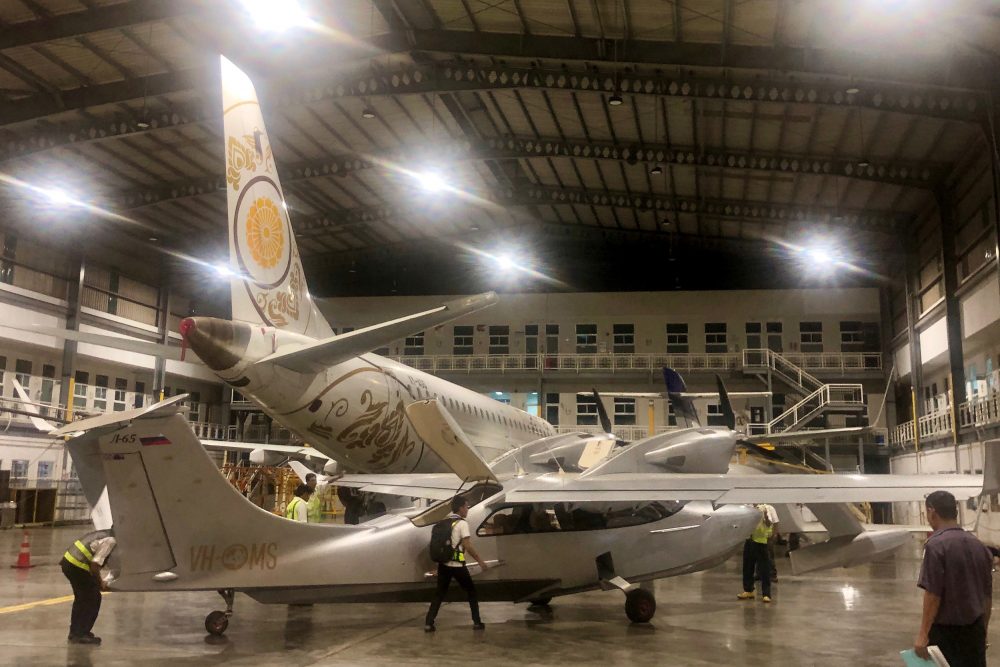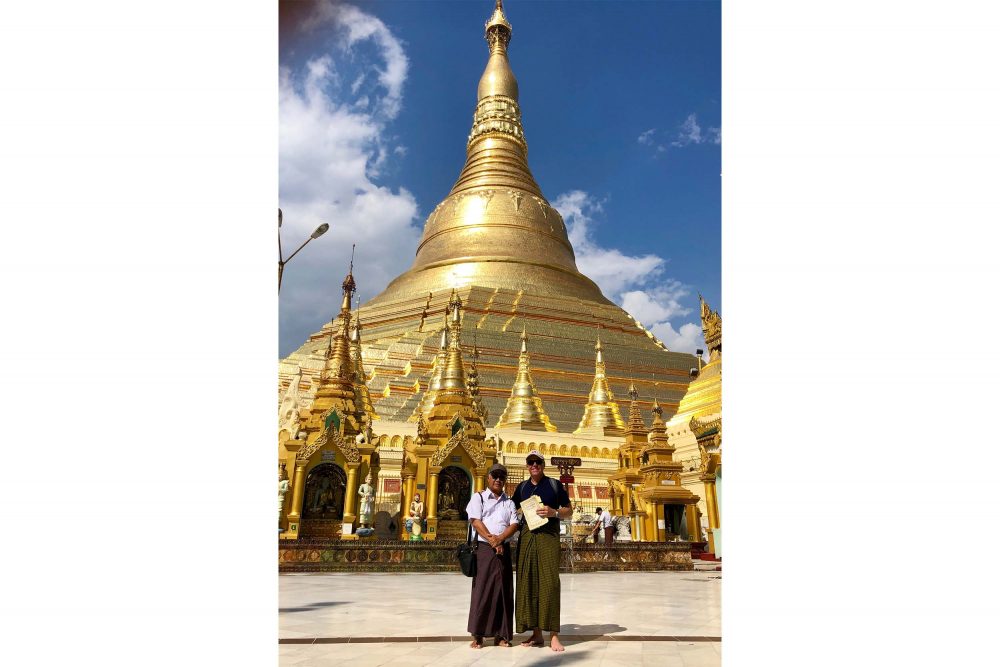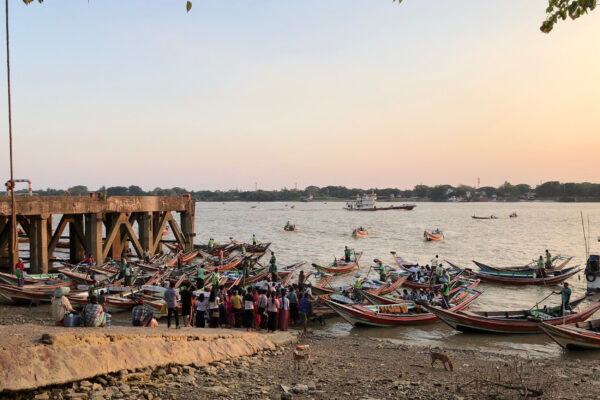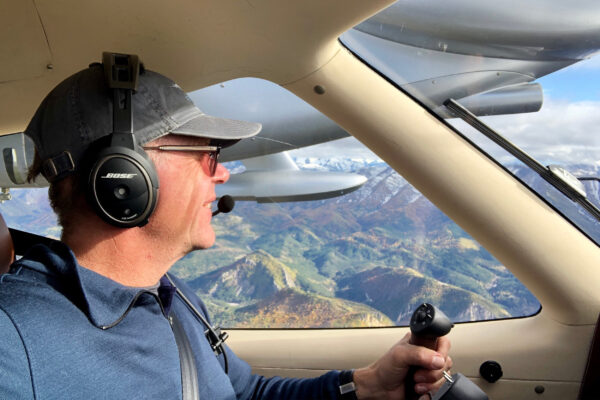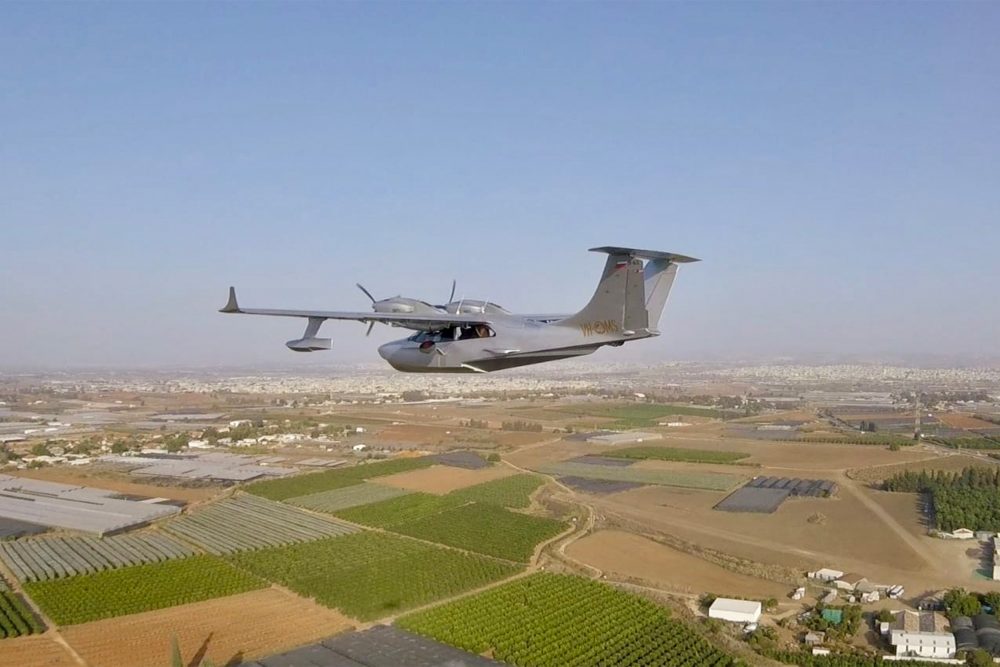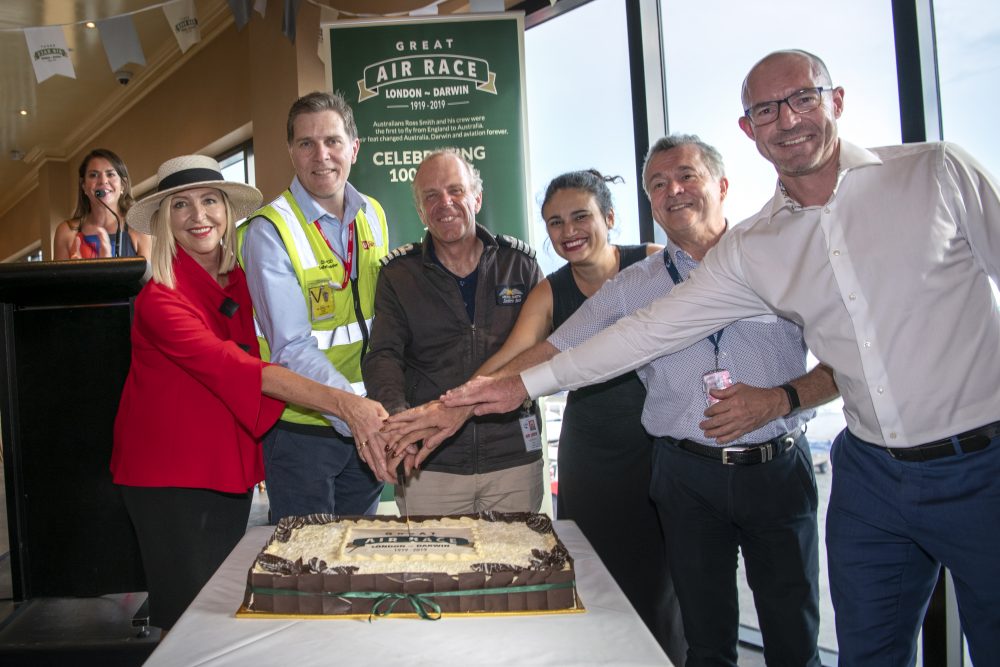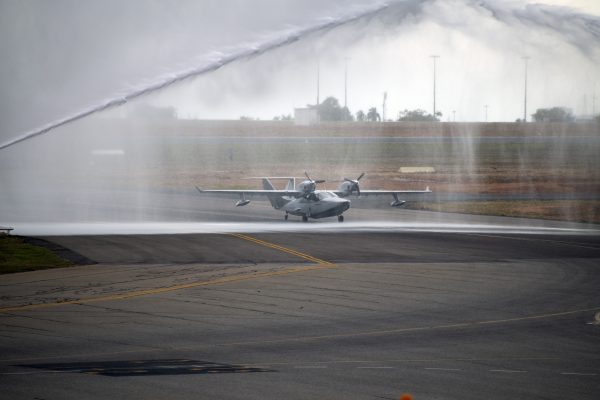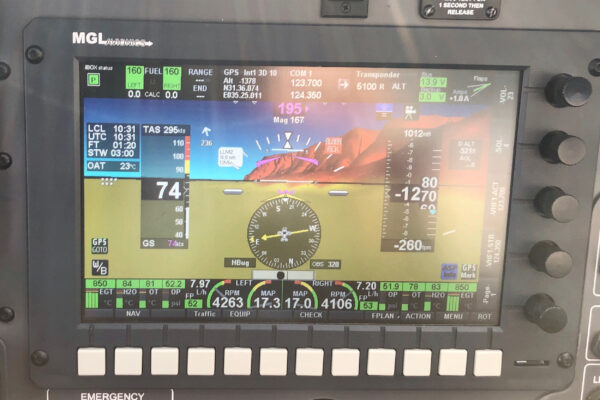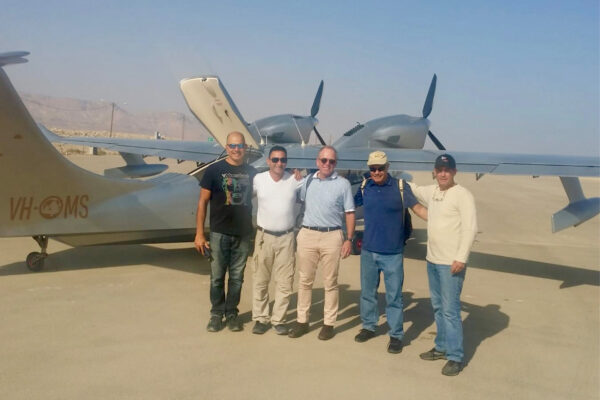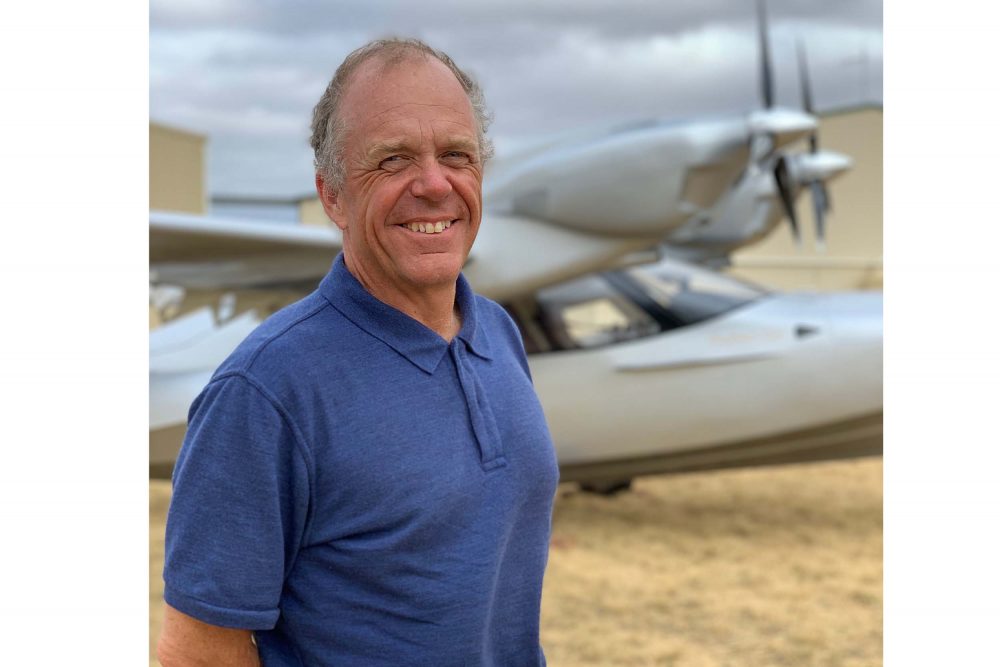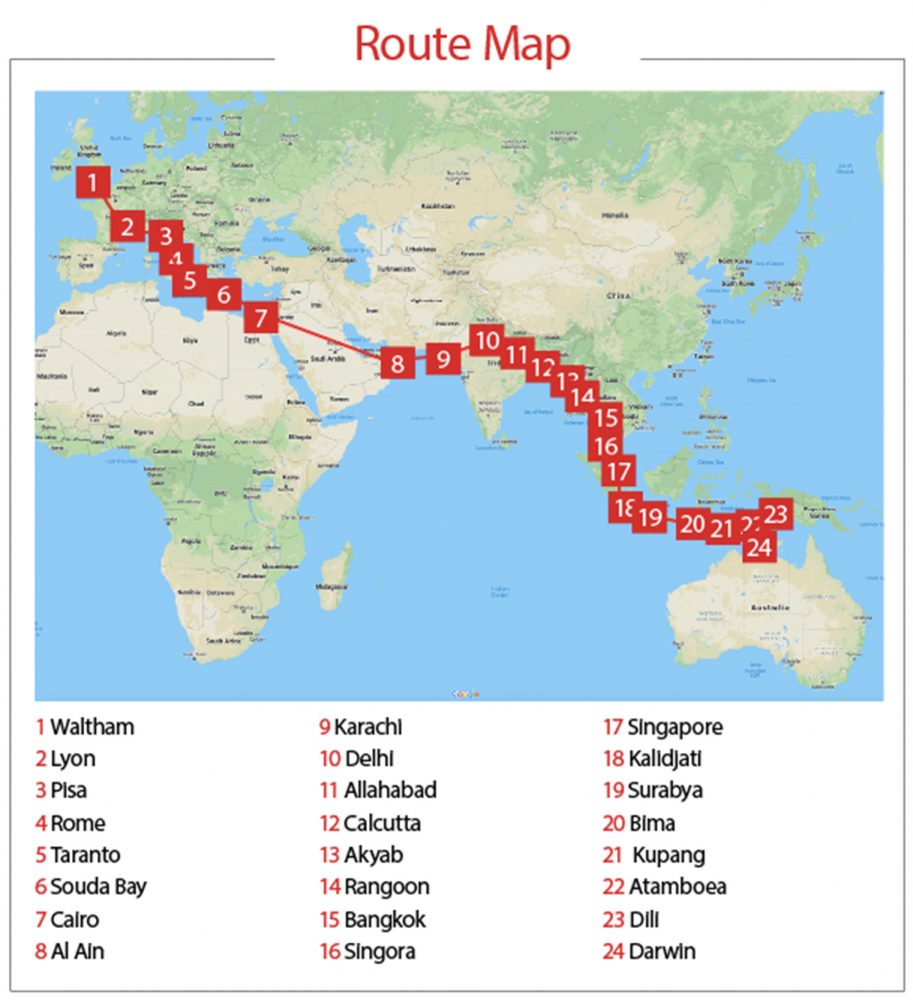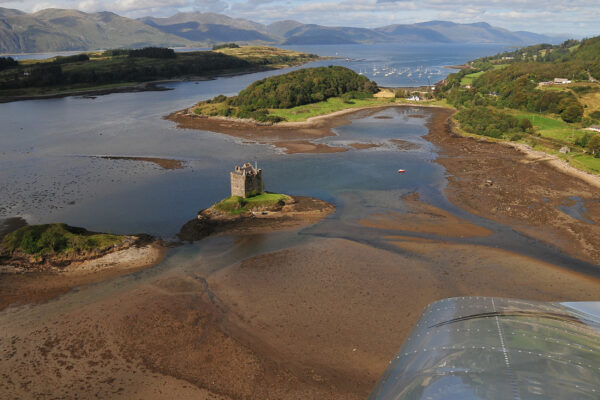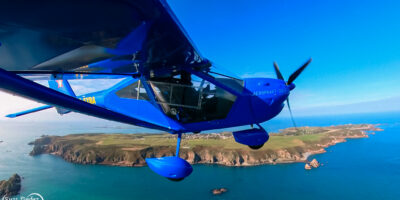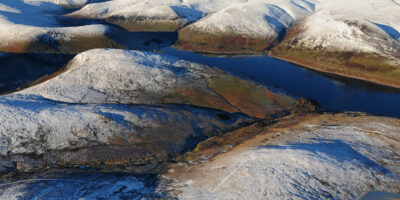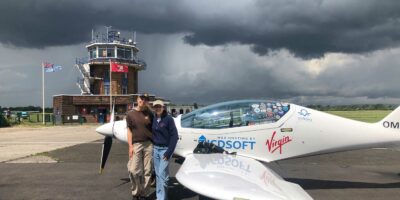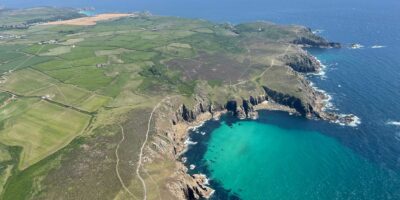Ross Smith had great freedom wandering the pyramids, and was even able to get a photo with no one else in it! I made my best effort to take a shot just like his, and while I couldn’t get in the same position, my perspective was not too different to his…
With an early start the next day for Haifa in Israel, I needed to get some rest. But, all too easily a plan collapses. I had been advised that flying from Cairo to Israel (direct) was not possible, so had planned via Aqaba, adding about 200 miles to the direct route, for a quick pit stop then onwards departure.
So many delays due to paperwork and weather meant that I was really up against it. I not only wanted to keep moving as my Darwin-bound date of 10 December loomed quickly but I was also to be a guest speaker at a dinner in Israel and I was determined not to let them down. And, I was also conscious of maintaining safe operations.
Finally, I reluctantly accepted the longer route, and with a requested 9,500ft I got away, and was immediately told to climb to 11,000ft, then 13,000ft, and soon after, an impossible 23,000ft. Then I was to track due south to a new waypoint – changing my route and adding another 150 miles – and I have to tell you, I really started to worry, and I had images of having to ditch in the sea. So I pleaded with the controllers, explaining that both height and route were precarious for me… After the intervention from a captain of another flight, they relented and let me return to the planned route and descend to 11,000ft. Here, despite advising my maximum operational height was 10,000ft without bottled oxygen, having flown a lot at this height I knew I would be OK.



